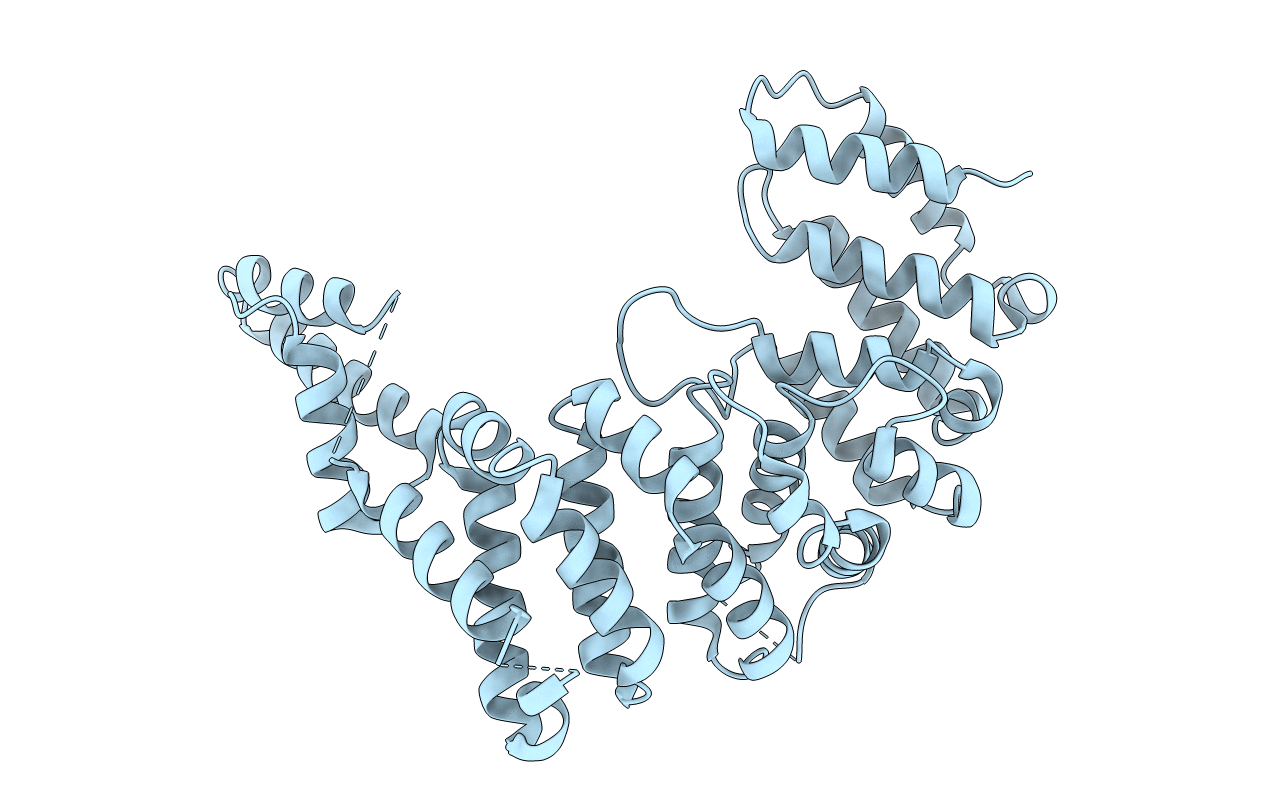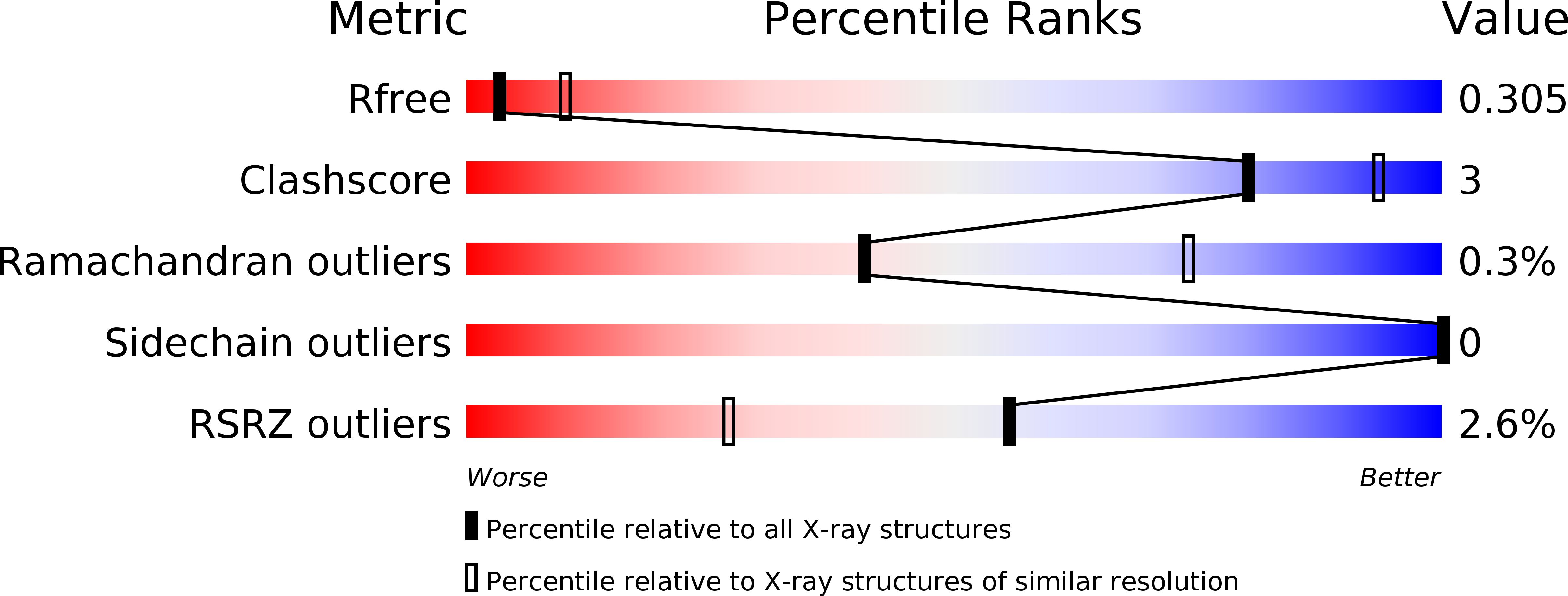
Deposition Date
2018-05-11
Release Date
2018-10-24
Last Version Date
2023-10-11
Entry Detail
PDB ID:
6DEE
Keywords:
Title:
Crystal structure of the C-terminus of Homo sapiens SPIN90 (SH3-protein interacting with Nck), residues 306-722
Biological Source:
Source Organism:
Homo sapiens (Taxon ID: 9606)
Host Organism:
Method Details:
Experimental Method:
Resolution:
3.04 Å
R-Value Free:
0.30
R-Value Work:
0.25
R-Value Observed:
0.26
Space Group:
P 41 21 2


